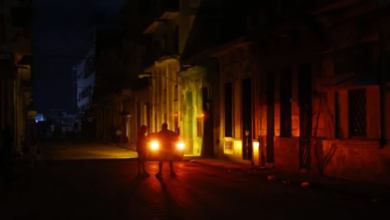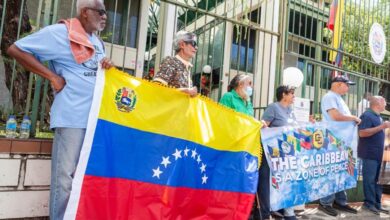From Black Mirror to Latin America: The end of insecurity?
Technology has become the main ally of security agencies in the fight against organized crime in times of deficit of uniformed
On the same day that Colombian President Iván Duque advanced the first Security Council of Bogotá in the company of Mayor Enrique Peñalosa, at the Corferias Convention Center in the same city the International Security Fair E+S+S began.
Leer en español: De Black Mirror para Latinoamérica: ¿El fin de la inseguridad?
In this, the greatest exposure of security and protection solutions in the Andean region, Central America and the Caribbean, leading companies in this area presented some of the most recent technologies. Which, some governments in the world have adopted to face the same challenges to which the president was referring together with the maximum local authority of the capital of the country.
As part of its strategy, outside of the increase in the strength of the Metropolitan Police, Duque highlighted the role of security cameras implemented by the Peñalosa administration, which has favored the reduction of homicides in the city.
"We have seen a very important job in the hands of the mayor and the private sector. The city will end the year with more than 5,000 cameras when just three years ago it had less than 600. This will help cooperation with the police, "said the head of state.
And it is with the intention of "having controlled scenarios for video surveillance systems that allow the identification of suspects or those responsible for a criminal act", as stated earlier this year by the Mayor's Office of Bogotá. The number of cameras went from 267 that worked in 2015 to 302 in 2016 and 1,600 last year.
Five years ago, 25 cameras located in the same area of this city were the initial key to the clarification of the case of a DEA agent, victim of the scourge of theft of taxi passengers, known in the country as "millionaire stroll". On that occasion, this resource helped in just five days to capture all the members of the gang that committed that crime.
But it has not been the only case. Last week in Medellin, after a year of monitoring, the police managed to completely dismantle a band known as "the untouchables", authors of more than 64 robberies in the city center, especially taxi drivers and foreigners. According to the undersecretary of operations of the Ministry of Security of Medellín, Mateo González, much of the success of this action fell on the more than 1,4000 video surveillance cameras arranged in one of the most representative sectors of the capital of Antioquia. González stressed that during this four-year period the number of cameras will increase from 1,400 to 2,800.
Also read: Green Lantern: WhatsApp detectives, Twitter, Facebook and online discussion
On-demand solutions
Just in the middle of the E+S+S Fair, to which LatinAmerican Post attended, the Korean company Hanwha Techwin, a global leader in video surveillance solutions, presented its concept of "safe city".
This includes the articulation of thermal cameras that detect people and objects in the midst of extreme environmental conditions such as smoke, snow, fog or heavy rain (characteristic of several capitals of the continent). In addition, it can recognize critical sounds such as gunshots, explosions, screams and broken windows.
To this, we add modular lens multisensor cameras, which allow multiple addresses to be covered simultaneously without blind spots. These are able to capture looting and sabotage, recurrent crimes in spaces such as ATMs.
In other latitudes, these devices are key to combat recent phenomena such as the so-called "portonazos" in Chile, a form of assault that consists of robbing victims when they are in the process of opening the door of their homes from their vehicle, which is stolen by armed hands. Hence it's name.
According to Juan Pablo Reed, sales director for the Southern Cone of Hanwha and in statements to this medium, through the security cameras installed by the municipality, the operator manages to determine that "a vehicle that normally circles the sector and not it tends to be from home, activates alarms and leads the police to act before an illicit act is committed. "
According to Reed, although the devices are available, coordination among the authorities is lacking. Hence, the importance that all are integrated under a large system that allows the identification of criminals and provides security to all citizens.
This week, the security secretaries of the main cities of Colombia called attention to a deficit of police in the streets that exceeds 20,000 uniformed, and that is why they proposed to the national government that those who were in administrative work to go on patrol.
For their part, they indicated that the camera monitoring work could be done by civilians. And is that these devices, the source of daily news stories around the world, become the global weapon to stop the common crime that inhabits each city in Latin America.
LatinAmerican Post | Federico Duarte Garcés
Translated from: 'De Black Mirror para Latinoamérica: ¿El fin de la inseguridad?'






